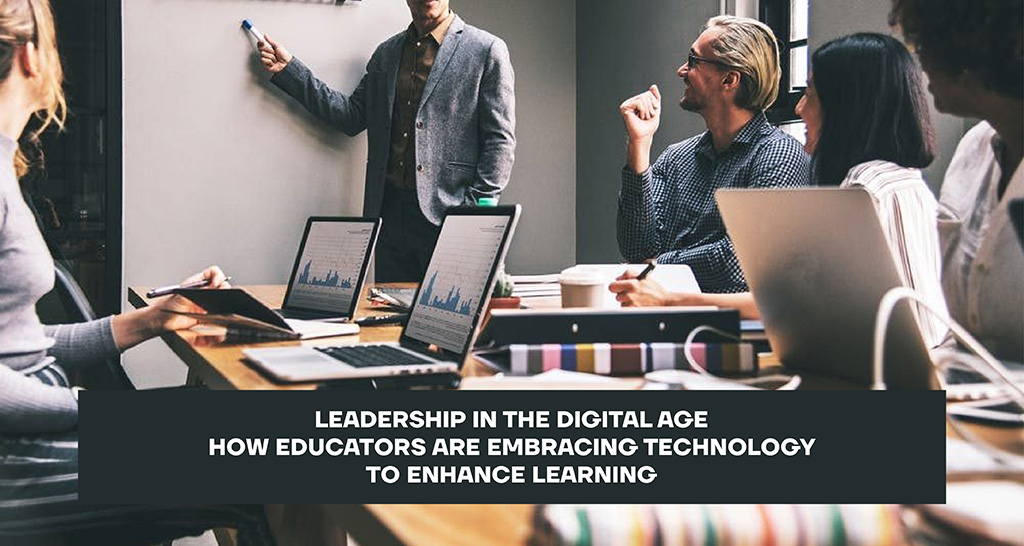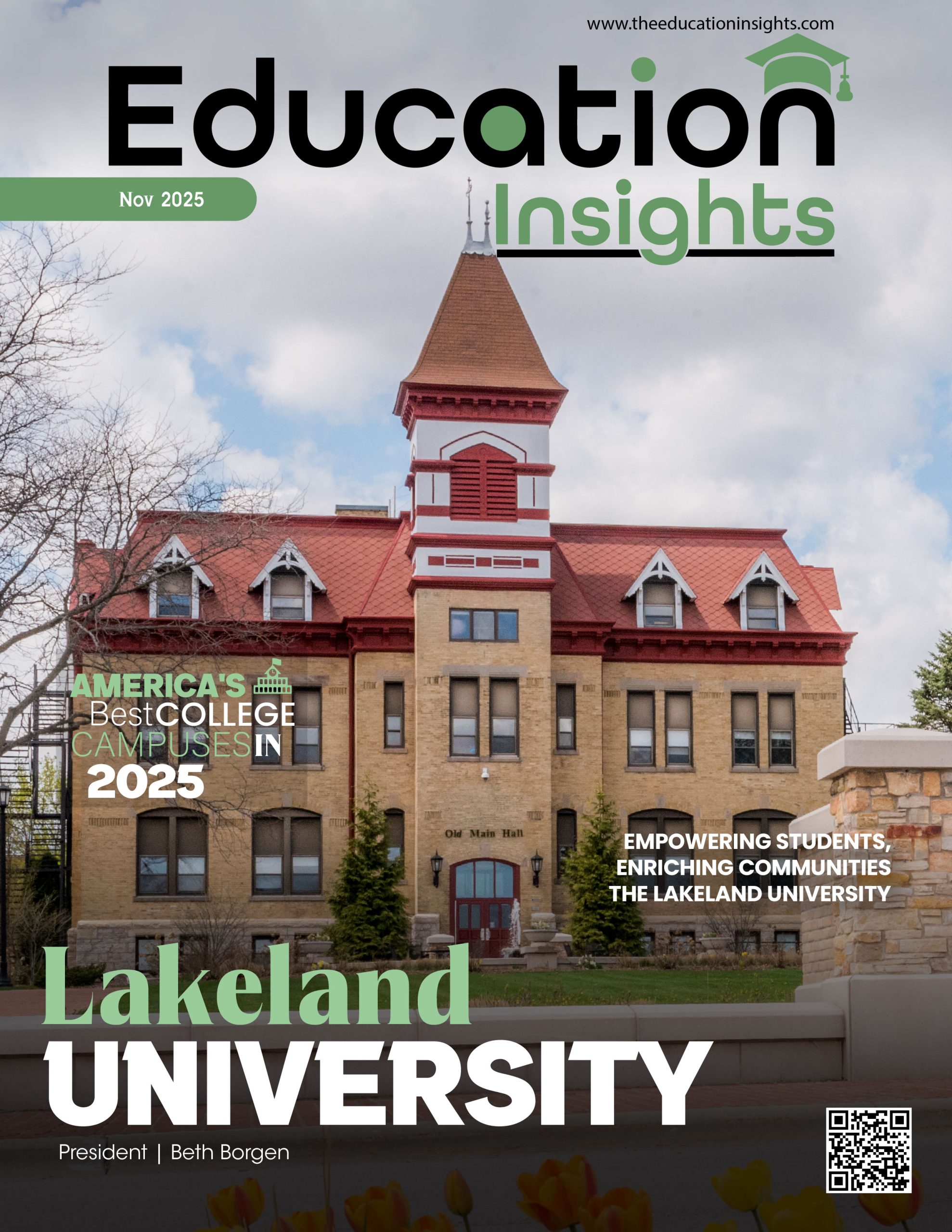In contemporary times, educational leadership is closely associated with the capacity to effectively utilize and incorporate technology into the learning process. As global connectivity and digitalization advance, there is a growing expectation for educators to pioneer innovative approaches that utilize emerging tools and strategies to address the varied requirements of students. The Digital Age introduces distinct challenges and possibilities, necessitating that educators not only possess expertise in their subject matter but also become proficient in the technologies that influence student access to and interaction with information. This article examines the ways in which educators are adopting technology, the significance of leadership in this evolution, and the impact of technology on enhancing learning experiences in modern classrooms.
The Digital Revolution in Education
In recent decades, the swift progress of digital technology has transformed numerous industries, with education being a notable example. The emergence of the internet, mobile devices, and interactive software has resulted in a significant proliferation of digital tools and platforms aimed at facilitating and improving the teaching and learning experience. Tools such as learning management systems like Google Classroom and Moodle, along with interactive platforms such as Kahoot and Padlet, have made education more adaptable, engaging, and accessible than it has ever been.
The advancements in technology have significantly altered both the learning experiences of students and the teaching methodologies employed by educators. In contrast to conventional lecture-based approaches, teachers now can facilitate engaging and interactive lessons that promote collaboration, critical thinking, and creativity among students. Nevertheless, the successful integration of technology into the educational landscape necessitates robust leadership leaders who can adeptly navigate both educators and students through this digital evolution.
The Role of Leadership in the Digital Age
Effective leadership in the digital era transcends mere technology implementation; it involves cultivating an environment that prioritizes innovation, collaboration, and adaptability within educational settings. Educational leaders must recognize that technology does not serve as a universal remedy instead, it should be employed strategically to enrich the learning experience. Consequently, it is imperative for educational leaders to take the initiative in offering the necessary training and support to empower teachers in the effective use of technology within their classrooms.
Leadership in this context extends beyond the roles of school principals and administrators. Teacher leaders, department heads, and even students can significantly contribute to the effective incorporation of technology within the curriculum. A collaborative leadership approach that promotes shared learning and experimentation with digital tools cultivates a growth mindset among educators. When teachers receive support in their technological endeavors, they are more inclined to adopt new tools and seek innovative methods to integrate them into their instructional practices.
Embracing Technology to Enhance Learning
The incorporation of technology into the educational sphere can significantly improve the learning experience in various important aspects. Below are several key domains in which technology is exerting a substantial influence:
Personalized Learning: One of the primary advantages of technology in education is its capacity to customize learning experiences according to the unique requirements of each student. Instruments such as adaptive learning software and learning management systems are capable of monitoring student progress, pinpointing areas of difficulty, and recommending resources or activities to facilitate improvement. This degree of personalization was unattainable in conventional, uniform classroom environments. By leveraging technology, educators can address a variety of learning styles and needs, offering additional assistance to students with learning disabilities while also presenting more challenging materials to advanced learners.
Collaboration and Communication: Advancements in technology to enhance learning have significantly enhanced the ease and effectiveness of collaboration. Digital platforms such as Google Drive, Microsoft Teams, and Zoom enable students and educators to engage in real-time collaboration, irrespective of their geographical locations. Projects that previously necessitated in-person meetings can now be executed asynchronously, thereby increasing the flexibility and accessibility of the learning process. Furthermore, the communication among teachers, students, and parents has become more streamlined and reliable, contributing to the establishment of a nurturing educational atmosphere.
Engagement and Motivation: Technology possesses the capability to enhance student engagement by transforming the learning experience into a more interactive and immersive one. For instance, gamification incorporates game design elements, including points, levels, and rewards, to inspire students and render the learning process more enjoyable. Educational applications and games can convert lessons into challenges that promote active involvement and critical thinking. Additionally, virtual, and augmented reality tools enable students to investigate intricate concepts in engaging and educational manners. These advancements not only make learning more pleasurable but also improve its effectiveness by offering students practical, experiential learning opportunities.
Access to Resources: The internet has made knowledge more accessible to everyone. Students now can tap into an extensive array of educational resources, including online courses, academic journals, and multimedia materials. This abundant source of information enables students to delve deeper into subjects, expanding their understanding beyond traditional textbooks. For educators, digital resources present innovative teaching materials that can enhance lessons and provide diverse explanations or methods for conveying challenging concepts.
Overcoming Challenges
The advantages of technology to enhance learning in education are evident; however, its application presents certain challenges. A significant hurdle is the digital divide, which refers to the disparity between students with access to technology and those lacking it. It is imperative for educators and leaders to strive towards providing all students with the essential devices and internet connectivity required for complete engagement in digital learning.
Teachers may encounter opposition to change, especially if they do not possess the necessary training or confidence to utilize new technologies effectively. It is crucial to implement professional development programs that empower educators to fully leverage digital tools. Additionally, schools and districts should offer continuous support and foster a culture of experimentation, allowing educators to explore new technologies without the apprehension of failure.
Conclusion
Leadership in the Digital Age necessitates a progressive perspective on education, viewing technology as a significant asset rather than a mere distraction. Educators who adopt technological tools can create more tailored, engaging, and inclusive learning experiences for their students. Nevertheless, for technology to achieve its full transformative potential, educational leaders must oversee its integration with care, offer sufficient support and training, and guarantee equitable access for every student. By implementing these strategies, they can equip students for success in a progressively digital landscape, where proficiency in technology is crucial for both personal and professional development.










